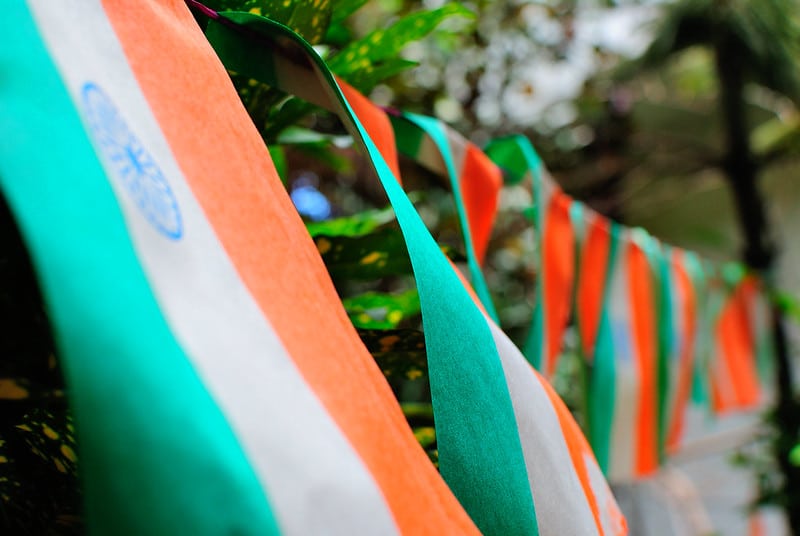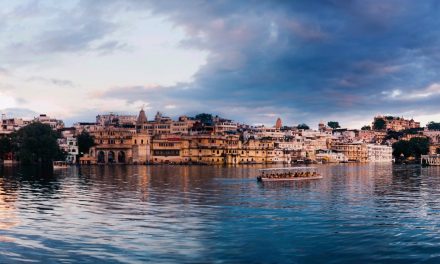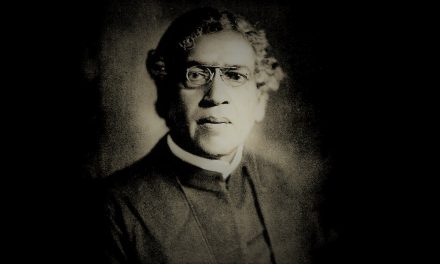India is an emancipatory paradox.
It is premised on a civilization of contradictions that interestingly induce realization of the self and of the Universe, and, thereby, promote a disruptive movement towards liberation and a humanitarian ideal.
The Indians’ has been full of paradoxes as well. Not just from 1947, but from times immemorial. We have ancient Hindu texts like the Avadhuta Gita (अवधूत गीता), which shows us the primacy of paradoxes in the conception of the Universe at its most fundamental, in verses such as
नानात्वमेकत्वमुभत्वमन्यता
अणुत्वदीर्घत्वमहत्त्वशून्यता।
मानत्वमेयत्वसमत्ववर्जितं
तमीशमात्मानमुपैति शाश्वतम्।।
They attain to the supreme, eternal Self, who are devoid of manifoldness, oneness, many-and-oneness, and otherness; who are devoid of minuteness, length, largeness, and nothingness; who are devoid of knowledge, knowableness, and sameness.
Avadhuta Gita (2:36) by Sri Dattatreya
This is not only transcending binaries but highlighting the non-absoluteness of multiplicities as well. The ancient Indian epics such as Mahabharata and Ramayana are infused with a sense of paradox. There are virtuous individuals like Bhishma and Karna supporting the immoral side in the Kurukshetra conflict. We hear of the story of the encounter between Ravana and Yamaraj (the Hindu god of death) in the Ramayana, when Lord Brahma intervenes, since Daśagrīva Ravana, who was given a boon of immortality against all beings besides humans by Lord Brahma, could not come face-to-face with Kaladanda, the irresistible staff that could vanquish all – again given by Lord Brahma to Yamaraj, without an inherent paradox being manifested and a falsehood being committed. The second Adhikarana of the Arthasastra by Chanakya brings forth a compassionate pragmatism where he talks of the king giving the farmers tax breaks in such a way that it “swells the treasury eventually”, which was seen repeated by Harihara II of the Vijayanagara empire in 1379 AD.
The underlying essence of this paradoxical pragmatism seen in myriad avenues invariably seems to be purpose-driven, usually either to underline certain moral precepts or to humanize the inherent nature of the Universe which seems to paradoxical in various places and ways – a thought highlighted as such in the Vedic treatises and seminal works like Avadhuta Gita. There are also certain examples of paradox in practice that are counterproductive. For instance, in documented history, we have pacifist ideations and political assertion going hand-in-hand, with rulers like Kharavela – a Jain king of Kalinga who (quite violently) subjugated Gorathagiri and Masikanagara, while personally espousing Jain ideals of non-violence, and the post-Kalinga Ashoka still speaking sternly against recalcitrant forest tribes while being generally pacifist by that time. However, these episodes are not given any primacy in the larger narrative and discourse of the Indic people, given that not many, even among Indians, who are reading this may have been aware of these incidences from ancient Indian history. It is a tragedy that in the land where Sri Krishna is said to have stated
चातुर्वर्ण्यं मया सृष्टं गुणकर्मविभागश: |
Srimad Bhagavad Gita
तस्य कर्तारमपि मां विद्ध्यकर्तारमव्ययम् ||
in Srimad Bhagavad Gita (4:13), highlighting that man’s occupation is defined by his qualities and activities, not by birth, the idea of Jaativad (जातिवाद) or casteism as a system of societal segregation and discrimination based on birth and not qualities or activities came to the fore over the centuries, even as it co-existed with the fundamentals of Vedic thought that still aligned with ideas of egalitarianism. People often talk of the Purusha Sukta as being the basis of casteism. I find this questionable since the concept of Purusha itself is not empirical or physicalist but rather transcendental and spiritual, notwithstanding the claims by scholars such as Stephanie Jamison, Friedrich Albrecht Weber, Joel Brereton, John Muir and Henry Thomas Colebrooke have alluded to the possibility of the Sukta itself being a later interpolation into the Vedic text. This transcendental definition of Purusha is seen in the Srimad Bhagavad Gita (11:38)
त्वमादिदेवः पुरुषः पुराण
Srimad Bhagavad Gita
स्त्वमस्य विश्वस्य परं निधानम्।
वेत्तासि वेद्यं च परं च धाम
त्वया ततं विश्वमनन्तरूप।।
which talks of Purusha being above the material modes of nature, highlighting the spiritual dimension. Therefore, the idea of physicalist hierarchies being evident in the supposed ‘hierarchy’ on the corpus of Purusha is inherently self-contradictory. Regardless, the reality of casteism existing well into the 21st century and particularly co-existing with the Dharmic civilizational ethos of spiritual oneness is one of the paradoxes that has to be actively addressed, for social justice and equity.
The Indic people have had a heritage centered around the intermingling of oft-contradictory systems of philosophy and theology co-existing and even undertaking Purvapaksha (पूर्व पक्ष) – a tradition in the debates of Indian logicians. The idea behind this is familiarization with opposing points-of-perspective before and beyond criticizing them. The philosophy of dialectics, logic, and argumentation as well as the art of debate known as Tarkaśāstra (तर्कशास्त्र) examines the nature, origin, and applicability of knowledge. The whole idea of exclusivism and dogmatic thinking, while possible within individual traditions and schools of thought, was not part of the broader socio-cultural framework of the Indic people. In fact, the Indic civilisational ethos has been centered around the negation of ego, which is said to be the root-cause of dogmatic thinking and other-ing of individuals and communities. In Vivekachudamani, there is an exposition of this thought by Sri Ādi Śaṅkarācāryaḥ
अहंकारः स विज्ञेयः कर्ता भोक्ताभिमान्ययम् ।
सत्त्वादिगुणयोगेन चावस्थात्रयमश्नुते ॥विषयाणामानुकूल्ये सुखी दुःखी विपर्यये ।
Vivekacūḍāmaṇi (Verses 104-105) by Sri Ādi Śaṅkarācāryaḥ
सुखं दुःखं च तद्धर्मः सदानन्दस्य नात्मनः ॥
where he talks of the ego, identifying itself with the body, becoming the doer or experiencer of situations and things, and when when sense-objects are favourable, it becoming happy and when not so, the ego making the person be miserable.
The advent of foreign invaders did not make things any less contradictory. An aspect that makes Indian history unique is the huge contradiction of political vulnerability in the middle of economic and cultural dynamism. Political expansionism into South-East Asia by Cholas and others notwithstanding, the spread of Indian culture across Asia was happening while the politics of the Indic people saw great turbulence. Interestingly, one of Asvaghosa’s earliest Sanskrit plays was discovered, not in some Magadhan archive, but among a mass of texts discovered in Turfan, an oasis settlement on the Silk Road betwixt Takla Makan and the Gobi wilderness. Upon the Muslim conquest of India, we saw one of the greatest paradoxes: a subaltern slave-soldier class known as the Mamluks taking over power. Alauddin Khilji’s repulsion of the Mongols in 1297 and 1303 AD helped save the Indic civilisation from a Mongol empire that had decimated Western Xia and the Jin dynasty in China, and one can only wonder whether the fissiparous kings who held India before centralized power was established in North India, with their internecine spars, could have held off the Mongol hordes. This is highly paradoxical since one cannot take away from the widespread destruction (having laid to waste Asaval, Ranthambore, Anhilvada, Chittor, Somnath, Dwarasamudra, Naharwala, Vanmanthali and Surat) and loot (including 2400 kg. of gold, 4000 kg. of silver and a large sum of precious gems, silks and pearls in the Devagiri campaign as well as 5000 horses, 512 elephants and 2000 kg. of jewels and gold in the fight against the Pandya kingdom) of Khilji. Paradox infused the lives and personalities of the Mughals too. Babur and his descendants who took the throne of Delhi after him personified paradoxical traits: minacious and naive, astonishingly forgiving and unfathomably cruel, learned and ignorant, intensely religious and openly self-indulgent. We can see all these traits in Akbar, for instance. He was menacing in his sieges of Kalinjar and Ranthambore, while being fairly naive in his attempts at establishing a new religion – Din-e-illahi, He forgave Ali Quli Khan after his rebellion, while he was fiendish in his slaughter of 30,000 Hindus after the fall of Chittor. Akbar was a patron of books, even as he supported writers and commissioned translations, but did not have formal education. Akbar was a devout Sunni Muslim between 1556 and 1562, before undertaking explorations of variants and other religious directions. In that period, he adhered to Islam’s teachings as a devoted Muslim, offering five prayers a day (Namaz), observing the Ramazan fast, and honoring the Ulemas of the faith. On the other hand, Akbar was indulgent and built the city of Fatehpuri Sikri on his whim, eventually abandoning it during his reign.
The influence of paradox was also seen in the colonial times. While Macaulay’s plan to intellectually convert Indians into a racial group of brown, Anglophile, and obsequious people was a rather parti pris and problematic endeavor, the creation of a novel civil society in British India under the control of the Raj resulted in a reconceptualisation of Indian society and the potential for the emergence of a contemporary nationhood. Due to this peculiar evolution, the Independence movement was able to establish relatively contemporaneous understandings and accompanying emancipatory plans for India. It is not surprising that the English in the beginning of the nineteenth century referred to India as a country like any other, yet in the years following the revolt of 1857, people like Fitzjames Stephen and John Seely went to considerable measures to deny any such nationality. While there was growth of the volume of long-distance trade by 160 times from 1840 to 1940 in India as per Prof. Tirthankar Roy and a 70% increase in India’s GDP between 1850 and 1947 as per Prof. Angus Maddison, it was primarily to benefit colonial interests and had very little that went to the Indians per se. Thus is presented a paradox again, of growth and impoverishment. Acts like the Costco Acts
“that from Michaelmas 1701, all wrought silks, Bengals and stuffs, mixed with silk or herba, of the manufacture of Persia, China or East India; and also all printed calicoes, and all painted, dyed or stained there, shall be locked up in warehouses appointed by the commissioners of the customs, till re-exported; so none of the said goods should be worn or used, in either apparel or furniture, in England, on forfeiture thereof, and also of two hundred pound penalty on th persons having or selling any of them“
Walter, J. An Historical and Chronological Deduction of the Origin of Commerce, from the Earliest Accounts. Logographic Press, 1787.
would contribute negatively to the Indian economy, which till that point had been a major player in textile, particularly cotton. The effect was drastic, with the yarn output of the handloom industry going from 419 million to 240 million pounds in the second half of the nineteenth century. The most difficult paradox they had to deal with, which arguably afflicts any colonial enterprise, arose from their assertion of the colonised – India’s differences with respect to the coloniser – the British, despite the fact that there was an innate similarity that they couldn’t entirely refute, especially due to medical parasitological research indicating similar vulnerability of the British and the Indians to particular health maladies. From the Battle of Plassey in 1757 AD onward, particular Indians’ complicity in the course of their own people’s subjugation poses still another paradox, although it continues a tradition of betrayal seen in important turning-points of Indian history such as the Battle of Khanwa in 1527 AD. Specific, fundamentally incongruous governing attitudes grew in popularity. The desire to prepare Indians for self-government was the most blatant, while crippling their economy and society. Another such mindset was teaching Indians about British political theory and legislation, while using the same for maintaining a differential of power and influence of the Indians, both within and beyond the confines of the Indian subcontinent.
The paradoxes of history are seldom kind, with most of them creating rifts, ruptures and rancor. India’s tryst with destiny on 15th August 1947 saw a paradoxical leader in Jawaharlal Nehru, who was a contemplative idealist with a profound sense of empathy for the multitudes, particularly the disadvantaged sections of society; a member of the modern aristocracy who was accustomed to privilege and yet had strong socialist beliefs; an Anglicized Cambridge graduate who served more than ten years behind bars in British jails; a fierce agnostic who quite willingly became the protégé of Gandhi, who was a self-proclaimed Sanatani Hindu. An example of the paradox inherent in Nehru was seen in his foreign policy, which was highlighted by G. H. Hudson in the Commentary
“The events in Egypt and Hungary have brought into focus as an issue in Indian politics the “double standard” which Nehru has long maintained in his judgments on world affairs as between the Western powers and the states of the Sino-Soviet bloc. After the Indian delegation to the United Nations had abstained from voting on the resolution passed by the Assembly (November 4) calling for a cessation of Soviet military intervention in Hungary, and the executive of the Congress party under Nehru’s direction had adopted a resolution strongly condemning the Anglo-French invasion of Egypt but referring to the Soviet action with only the mildest expression of regret…”
Commentary, December 1956
As per certain scholars, this same paradoxical posturing is what affected India in the Sino-Indian conflict of 1962. The contradictions in his approach to the relationship with China, which almost seemed to be a fatal infatuation sans reciprocity, underpinned the disaster that led to the annexation of Aksai Chin by the Chinese, in what remains a blot on the history of independence India’s trajectory.
The key to accepting the paradox that is India is to accept its story, its trajectory, its reality as an expression of emancipation. An emancipation from denial vis-à-vis the nuances of life and the Universe, which encompass disparate and oft-contradictory aspects. An emancipation from the rigidities that come with dogma, as seen in the destructive effect that Aurangzeb’s bigotry had on the Mughal empire (even as he continued to confer jagirs – land grants to Hindu establishments such as the Someshwar Nath Mahadev temple in Allahabad). An emancipation from the parochial bounds of identities and ideologies, and in doing so, being truly humane. Modern India is built on Dharmic tenets of a civilization that is far older than the modern nation-state. Its inclination towards true secularism and acceptance of multiplicities is unseen anywhere else in the world, since the very soul of India is pluralistic. Today, unfortunately, this paradox is manifested in positive as well as negative ways. We have some of the world’s richest co-existing with some of the world’s poorest in India. Today, we have some of the most diverse populations living together in India. Agency is important to not just realize the paradoxes inherent in India but to address them and resolve them as best as we can. Diversity and differences are realities of life and the Universe, and yet there is an inherent oneness which the ancient Hindu seers so beautifully highlighted and promoted in their treatises. Like the various Tiranga in the banner here, the disparate elements of our populace and people are manifestations of an inherent oneness in the idea of the nation, moving towards their individual liberation and emancipation, often in paradoxical ways, and that movement, through lived experiences, takes us to the paradox of all paradoxes: neither individualism nor non-individualism is supreme. It is in the balance of individualistic and communitarian, in the synergy of the idiosyncratic and the societal, that the progress of our self, our country and of humanity may be found.
And it is in this paradox that lies a fundamental secret of reality: relations create greater relata, either of which are devoid of absoluteness! We are all part of a larger reality – of our nationhood and of our human condition, within which our correlations and compassion define the beauty of our shared existence. That is the plinth of the emancipatory paradox that is India.
Let us celebrate India’s 75th Independence Day with the promise that is India to humanity, in mind!
Jai Hind!
Banner courtesy FLP
















